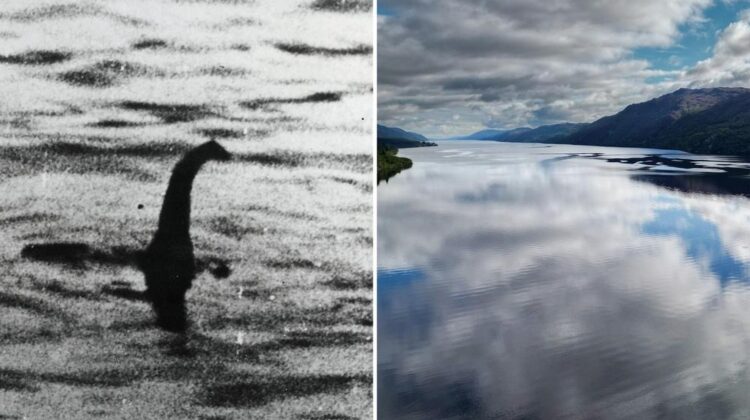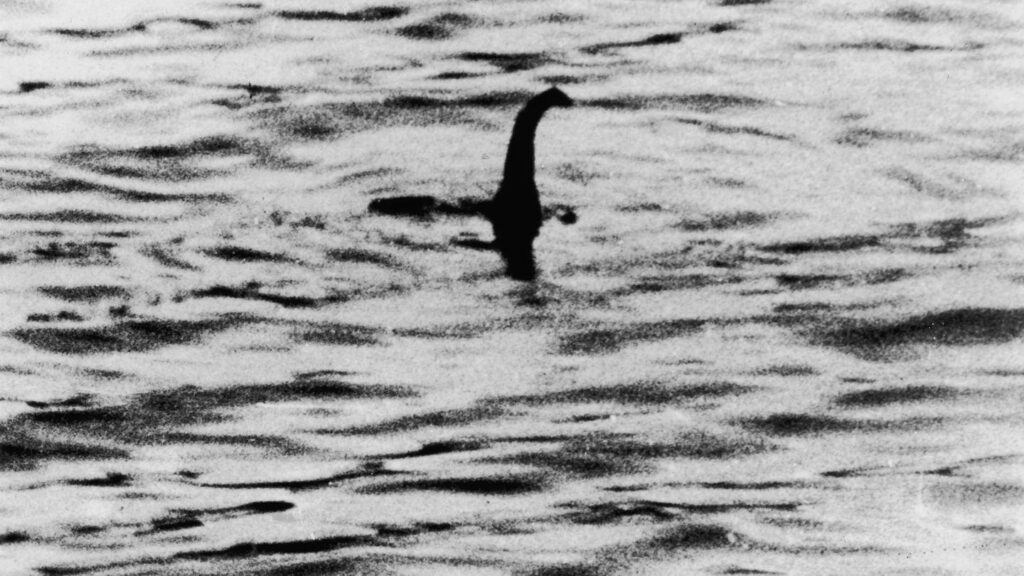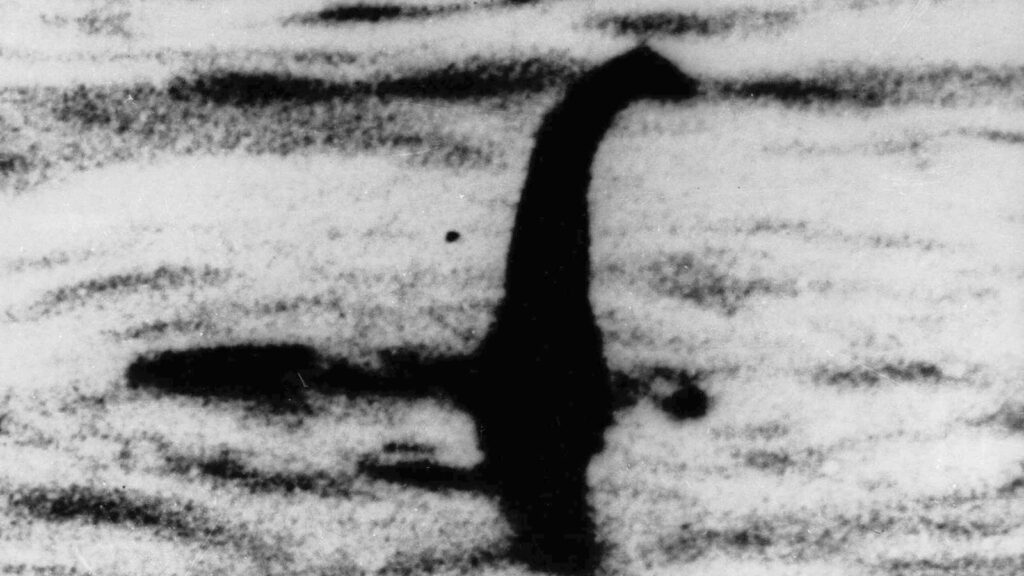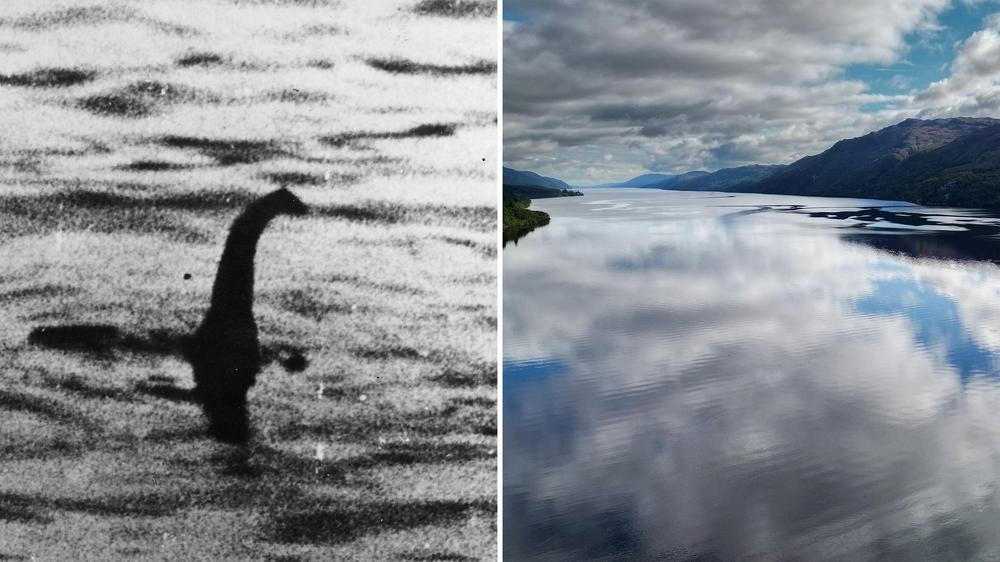
The Loch Ness Monster, or “Nessie,” remains one of the most famous and enduring cryptids in the world, captivating the imaginations of believers and skeptics alike. While no definitive proof has ever confirmed Nessie’s existence, the mysteries of Loch Ness continue to intrigue scientists, researchers, and enthusiasts. In a groundbreaking twist to the legend, a 1970 underwater camera, which was deployed to capture footage of the elusive creature, has resurfaced—offering haunting photographs that shed new light on the murky depths of Loch Ness.
The Search for Nessie: A Story of Mystery and Science
For decades, the legend of the Loch Ness Monster has fascinated those who believe in the paranormal, fueling one of the most iconic myths in modern folklore. From the iconic “surgeon’s photograph” of the 1930s to the more recent technological attempts to uncover the truth, Nessie has become synonymous with the deep, dark waters of Loch Ness.
In 1970, as part of an investigation into the legendary monster, Roy Mackal, a biologist from the University of Chicago, and his team from the Loch Ness Investigation Bureau deployed an array of underwater cameras to capture any sign of Nessie. Little did they know, one of these cameras would resurface more than five decades later, yielding eerie images that have rekindled interest in the Loch Ness mystery.

The Camera’s Amazing Discovery
Fast forward to the present day—an autonomous vehicle from the UK’s National Oceanography Centre (NOC), affectionately known as Boaty McBoatface, embarked on an ambitious underwater mission in Loch Ness. During its journey, the vehicle became entangled in an old piece of equipment anchoring one of Mackal’s cameras, which had been sitting dormant at a depth of 180 meters (around 600 feet).
When the camera was recovered and inspected by Loch Ness researcher Adrian Shine, founder of the Loch Ness Project, it was discovered that the camera had been remarkably preserved after 55 years underwater. The Instamatic camera, which had been part of a trap designed to capture footage of Nessie, had remained dry inside its casing. Even more remarkably, the camera contained undeveloped film, which, when processed, revealed haunting images from the deep, providing a rare glimpse into the otherwise inaccessible world of Loch Ness.
The Mystery of Loch Ness Continues

While the photos taken by the camera didn’t capture an image of Nessie herself, they serve as a reminder of the ongoing allure and mystery surrounding Loch Ness. Despite numerous scientific expeditions and advanced research, no concrete evidence of Nessie’s existence has been found. In 2019, a groundbreaking DNA study failed to detect any evidence of prehistoric creatures like the plesiosaur or even the Greenland shark, a species that could live for up to 500 years. Additionally, theories that Nessie could be an overgrown sturgeon or giant catfish were debunked.
However, one intriguing discovery from the DNA study was the presence of European eel DNA in the loch. While these eels are not nearly as large as the legendary Nessie, it’s possible that they could grow to impressive sizes in the absence of predators. Some researchers have speculated that Nessie could be an exceptionally large eel, a theory that has garnered both support and skepticism over the years.
The Role of Technology in the Ongoing Search
Despite the lack of evidence for Nessie, technological advancements continue to fuel the search for the unknown creatures of Loch Ness and the wider oceans. The NOC, which has spent decades developing autonomous vehicles, has turned its attention to mapping the ocean floor, a task that is far from complete. As of now, only 26% of the ocean floor has been mapped, leaving vast, unexplored territories in which unknown creatures might exist.

The Autosub robots, like Boaty McBoatface, are now used for long-distance operations and to map the depths of Loch Ness. These autonomous vehicles allow researchers to gather valuable data on the environment and uncover new insights about the unexplored world beneath the water’s surface.
The Future of Loch Ness Exploration
As the legend of Nessie endures, the quest to uncover the secrets of Loch Ness continues. While the camera from 1970 didn’t reveal the mythical creature, the haunting photos that surfaced remind us of the mysteries that lie beneath the surface of the loch. The scientific community remains committed to exploring the depths of Loch Ness, not just for the sake of myth, but for the potential of discovering new species and uncovering the mysteries of the natural world.
Whether or not the Loch Ness Monster exists remains an open question, but one thing is certain—the search for the unknown, fueled by technology and curiosity, is far from over. So long as the legend of Nessie lives on, researchers will continue to send autonomous robots and underwater cameras to explore the depths, ever hopeful that the truth might finally surface.

Leave a Reply